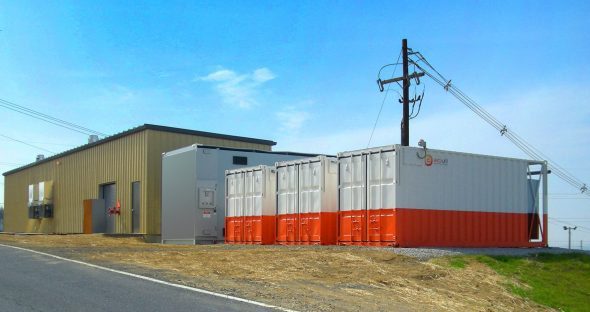The South Australia government has pressed the fast-forward button on its 100MW battery storage tender, announcing that expressions of interest for the country’s biggest battery storage installation are now open, and will close within two weeks.
The EOI process will be critical in informing the government what might be available and on offer, and on sharpening the terms – such as the number of hours of storage for a given capacity – in its formal tender.
“The battery must have a capacity of approximately 100MW and be operational in time for this summer,” the government said in its announcement.
Later however, premier Jay Weatherill said the government may accept multiple bids, and three sets of 50MW battery systems could be installed.
“There could theoretically be three separate winners, or there indeed could be one winner,” Mr Weatherhill said. “The criteria that we’ll be looking at to consider this is, of course, its technical capacity; second, to get it in place by summer. We want it here as soon as possible.”
“We said our plan to take charge of South Australia’s energy future starts now, and we mean it,” Weatherill said in the earlier statement.
“Over the next fortnight, we’ll test the market to hear what national and international companies have to offer. Building Australia’s largest grid-scale battery will help build our reputation for high-tech industries.”
The project, which will be financed by the newly-created $150 million Renewable Technology Fund is likely to be contested by a host of local and international players. Weatherill said on radio there had been significant interest, particularly in the Asia-Pacific region.
Previously, the likes of Tesla, Adelaide-based ZEN Energy, Lyon Solar, and Carnegie, confirmed their interest, and they have been joined by Korea’s LG Chem, and another two Australian companies VSun Energy (see pic above) and Ecoult.
Tesla, LG Chem, Zen, and Lyon are focused on variations of lithium technologies, but Ecoult is a CSIRO spin-off that has its own “ultra” super batteries based on lead-based technologies.
Carnegie is teaming up with Sumitomo for vanadium redox flow batteries while Perth-based VSun, a subsidiary of Australian Vanadium, is also using vanadium redox flow batteries, produced by Garmany’s Gildemeister, such as those installed in a farm in Busselton, WA.
The vanadium redox batteries were actually invented by an Australian – with the first successful demonstration made by Maria Skyllas-Kazacos at the University of New South Wales in the 1980s.
The South Australian government says the grid-connected battery will play an arbitrage role, storing renewable energy from the wind and the sun and selling the power at higher prices during peak demand.
It says it will increase competition, put downward pressure on prices, and play a role in providing system security, particularly in critical peaks when it will be instructed to provide back-up services.
Energy Minister Tom Koutsantonis said the battery storage tender would begin the transformation to the next generation of renewable energy technologies.
“Introducing grid-scale batteries mean renewable energy can be stored 24 hours, 7 days a week,” he said. “If the wind is blowing in the middle of the night, we can use that power when people wake up.
“The State Government is setting ambitious timeframes to build Australia’s largest grid-scale battery, but we believe these timeframes are achievable.”
The Renewable Technology Fund will provide a total $75 million in grants and $75 million in loans but only around $20 million is expected to be needed for its first auction.
It will later focus on other technologies such as solar thermal, biomass, hydrogen and pumped hydro.









